- Home
- Bill Bryson
Icons of England Page 9
Icons of England Read online
Page 9
I’m guessing that when the weather’s bad, you give the woods a miss?
No way! The woods in snow – brilliant! Every so often you bump into a branch and get showered in snow. It’s like confetti for the Ice Queen. See? In the woods I’m still that little girl! And in the rain I feel so smug; the leaves are sheltering me, but I can still hear those angry raindrops trying to get to me. Ha! On really windy days, my dog Alfie and I battle through the woods. Even though we’re being whipped by stinging nettles and grit gets in our eyes, we have to struggle through because we alone can save …
Save whom?
It doesn’t really matter. It’s just that when all those massive trees start sighing, in my head I hear the voices of souls who will always be there. Trees are my inspiration. You know what they say about trees bending with the wind?
Yes?
In tough times I remind myself that ‘Thy will be done’. If I don’t learn to surrender to forces bigger than me, I’ll snap like the brittle little twig I am out here.
You used a religious quote …
Ah, that’s because the woods are my temple. I can push through the brambles, wired with worry about something or other. I guarantee that by the time I get to the stream, I’ll be wondering what all the fuss was about! And then, when I get to the green on the other side, I have a solution. It’s like subconscious praying …
You’ve stopped…
Yeah. I’m just looking. Breathing. Understanding. Back when I was a little girl? I think I left the spirit of the Child that Was in the woods. For safe keeping.
DEFENDERS OF OUR BACK YARDS
Zac Goldsmith
on Nimbys
IF YOU REALLY WANT to shame someone nowadays, you call them a Nimby. But I’ve never understood why. Nimbys are people who care about their local environment and who are willing to protect it. That’s what the term means, and it’s hard to imagine a more positive approach.
Of course, for the government and the big developers, Nimbys are an awkward obstacle to overcome. That’s why the term itself was invented as a negative. When the House Builders Federation warns that ‘Nimbyism is rampant’, we know exactly where they’re coming from.
Nor is it surprising that governments forever seek ways to defeat Nimbyism – invariably by moving the decisionmaking process as far away as possible from the people likely to be affected. For years locally-elected decision makers have been stripped of their powers and sidelined in local planning matters. Controversial local developments can be opposed by residents, opposed by elected councillors, yet still pushed through by unelected national quangos.
But what’s harder to understand is why so many otherwise sensible people – campaigners, environmentalists, conservationists and so on – have allowed these selfevidently biased organizations to succeed in turning Nimbyism into a stigma. Why, whenever a local group criticizes a local development, does it feel the need to begin with the disclaimer, ‘We’re not Nimbys but …’?
Yes they are. And that’s a good thing. Almost every river campaign, indeed most good environmental initiatives, happen because people want to protect the environment they know and love. Decisions affecting a local environment are always best taken by those living in that environment. So why should people be embarrassed about wanting to protect their own backyards?
There are unhelpful Nimbys, of course. Jealous campaigns to stop a neighbour improving his home, pointless crusades against a solar-roof installation. And there are times when Nimby campaigns have to be ignored in the interests of the wider country. But can you imagine what England would look like without them?
Those village greens, your local playing fields, the patch of ancient woodland, that stretch of river bank – all of them will have been eyed greedily by successive developers. These same treasures have been just as tempting to councils, which view them as untapped pots of money just waiting to be spent on yet more parking meters and no smoking signs. But if they’re still there, there’s just one reason – Nimbys.
If the Nimbys were in charge, we’re told, the country would simply grind to a halt. But the collective wisdom of our Nimbys has proved far more advanced than that of our policy-makers. Take house-building. No one believes the planned house-building splurge on greenfield sites will solve homelessness, nor curtail house prices by more than a fraction of a per cent. So we’ll see the permanent removal of our precious green spaces, and mounting pressure on water, because most of the current demand for housing is in the south-east, a continued ‘brain drain’ from the north. And all for a temporary non-solution.
No. If Nimbys were in charge, we’d see an effort to free the estimated 700,000 vacant homes on to the market before saturating our already crowded countryside with new builds. We’d see the introduction of US-style incentives to use the 75,000 acres or so of brownfield sites that are available for up to 1.5 million new homes.
The odds have always been against Nimbys. But they are the country’s brakes on excess. We mustn’t be embarrassed to call ourselves Nimbys. on the contrary, if we are not motivated to improve our local environment, that is far more shameful. After all – if we’re not willing to stand up for our own backyards – who will?
AN ARTIST’S IMPRESSION
Andy Goldsworthy
on sheepfolds
AS AN ARTIST, I am often asked about the objects and locations that have directly influenced my work. For me, inspiration lies not in grand structures or celebrated monuments. It lies in a sheepfold at Winton in Cumbria’s Eden Valley.
I first encountered this unimposing fold soon after moving to Brough in the early 1980s – most likely while on a walk up to the Nine Standards on Hartley Fell. It was early in my career and I had a part-time job working on the nearby Helbeck Estate, which involved doing minor repairs to dry-stone walls. I was still some years from using folds and walls as part of my art. But when I think of the Winton sheepfold and the impression it made on me, it is fair to say this farming structure has played a huge part in my creative life. It certainly kindled my interest in folds as sculptural forms.
The Winton fold is just a simple, circular form. But what I still find so striking is the way the fold is sited. It sits in an open space – a collection point for sheep grazing out on the fell – and it provides an extraordinary focus for its surroundings. As you walk off the fells from open ground into fields that gradually become smaller and more defined, the fold begins to feel like an earthbound oculus.
In the late 1990s, as part of the Sheepfolds Project, I rebuilt and repaired fifty existing sheepfold, washfold and pinfold sites in Cumbria. Unfortunately, even though I was keen to work on the site of the Winton fold – with several proposals made to the village – I was refused permission to do so. It seems this uncomplicated agricultural mark on the landscape will always remain just beyond my reach.
CHERRY TIME
Henrietta Green
on an endangered English fruit
WHY ARE CHERRIES SO appealing? Mention them and almost everyone breaks into a smile. Is it their cheery cherryredness or glossy skin-shine, or the sheer joy of biting into such a small but perfectly formed fruit? Who hasn’t decorated their ears with cherry earrings, stained their lips with cherry-juice lipstick or tinker-tailored the stones for a partner?
There is, however, little to smile about when it comes to the state of Britain’s cherry industry. In the 1950s, when I was a child, cherry orchards covered 7,500 acres of the countryside. Travelling through Kent at the height of summer was cherry heaven with its roadside stalls laden with baskets, aka chips, filled with the freshly picked fruit. Now we grow less than a thousand acres, with home-grown cherries accounting for a mere 7.5 per cent of what we consume. In other words, 92.5 per cent of the cherries on sale, either fresh fruit or cherry-based products such as cherry pie or cherry brandy, are imported – even some of the fruit offered at the same roadside stalls.
What happened? The decline started in the late 1950s and was due, like almost everything in
life, to a combination of factors. Let’s start with the plague of birds and the state of our orchards. Most cherry trees in Britain were grown on old-fashioned root stock; as a result they were very tall, wide, stately and impossible to net. The fruit was unprotected and, not surprisingly, plundered – in some cases the trees were virtually stripped bare – by birds, mainly starlings. Starlings, for some inexplicable reason, were on the increase; if once you spotted a few, suddenly there were flocks of hundreds, even thousands. One fruitgrower even talked of how they ‘shadowed the sun – so thick were they in the sky’.
Picking the cherries was also a problem; the rows of trees were too closely planted to allow machinery through, so they had to be picked by hand. Labour was difficult, no one seemed to want to pick any more, and it became more and more expensive. And then there were the imports. As trading regulations relaxed, cheaper cherries came from the sunnier, warmer European countries or from North America. One by one, the cherry orchards were left to decline or, worse still, grubbed up. Selling the land for housing was a far more attractive option than investing in modernizing an ailing industry – think how often you see a Cherry Lane or Cherry Corner housing estate.
Recently, however, cherry-growing has seen a revival, with new orchards being planted. Now it is all about new dwarf and frost-resistant rootstock that produces smaller, lower, more manageable trees, planted in wider regimented rows. These are grafted with new large commercial varieties – size really does matter here. Darker and fleshier than our traditional cherries, these lack the bright intensity of colour, the piercing fruitiness, the solid and firm texture and defined shape of my favourites. Try the pointy, heart-shaped, white-fleshed Elton Heart or the spicy, juicy Bigarreau Gaucher and you’ll see what I mean.
Am I happy that growing cherries is on the increase? Well, yes and no. It reduces food miles, creates employment and I prefer to buy home-grown. But – and here’s the rub – in order to plant up these modern commercial orchards, some of the few remaining glorious, old-fashioned, chaotic orchards may have to go. And that would be a tragedy, not only for cherry lovers, but for the birds, bees, wild flowers and everyone who loves our English countryside.
PASTURES NEW
Graham Harvey
on species-rich grassland
ALONGSIDE OUR HOUSE ON Exmoor we have a small, steeply sloping pasture field known locally as ‘the cliff’. The gradient is so lethal that no one has ever dared venture on to it with a tractor. And so it remains – unlike most grass fields in Britain – free from meddling hands, weedkillers and nitrate fertilizers. It’s exactly the way nature intended.
In June, the field is festooned with wild flowers – rough hawkbit, clover, birdsfoot trefoil, known to the locals as bacon-and-egg, and burnet saxifrage. At times it looks more like a Constable painting than a serious place to produce food. Yet our small flock of Exmoor sheep thrives on it. And in summer the sward comes alive with grasshoppers, bees and flickering butterflies.
Now a forgotten feature of the English landscape, pastures like this were once commonplace. At every site, the precise mix of species was as distinctive as human DNA, with particular plants offering clues about the type of soil and climate. Chalk downlands might often have included rock rose, kidney vetch, scabious and wild thyme. And on the acid heathlands, fine-leaved grasslands could be found flecked with rue-leaved saxifrage and sheep’s sorrel, with its tiny red flowers.
Whatever their precise composition, species-rich grasslands were the handiwork of generations of craftspeople the – shepherds and graziers who managed them. They knew exactly when to allow the animals to graze, and when to take them off again. In so doing, they created living masterpieces.
Of course, such grasslands weren’t intended as artworks. In fact, their beauty is a delightful by-product of the food production process. These were solar-powered engines of wealth creation, producing healthy foods in ways that were genuinely sustainable. They needed no fertilizers or pesticides to keep them productive. Nor were they dependent on diesel-guzzling machines. Yet, year after year, they turned out most of our beef and lamb; our poultry and eggs; our milk, butter and cheese.
Today we have turned our back on nature – choosing to produce these same foods by shutting animals in sheds and feeding them expensive grain. Without limitless supplies of cheap oil we would never have embarked on such a wasteful system. Now the price of oil is soaring – and with it, the cost of industrial grain. Soon we may have no choice but to give up our dependence on fossil-fuelled food and reclaim our neglected grasslands.
Returned to their former glory, these wonderful pastures will benefit both our nation’s health and the health of the planet. Scientists have discovered that animals grazing traditional, species-rich grassland – including moorland pastures, heather moorland and saltmarshes – produce meat with higher levels of Vitamin E and heart-protecting omega-3 fatty acids than meat from modern grass monocultures. In addition, the meat from traditional grassland contains lower levels of saturated fat and higher levels of a powerful cancer-fighting compound known as CLA. And that’s not all. Pasture farming also has a part to play in the struggle against climate change. While grain growing depletes soil fertility and releases carbon, grasslands safely store carbon as organic matter, even while they produce copious amounts of food.
Our predecessors knew a lot about making the countryside beautiful, sustainable and productive. And there’s no reason why we – by recapturing our nation’s pastures – can’t do the same.
BONFIRE NIGHT
Tom Heap
on fires outdoors
TO TOSS A DENSE mass of ivy into the blazing maw is to hear the gardener’s equivalent of bursting bubble wrap. It crackles fiercely as though the fire itself was driven to grateful, riotous applause for such fuel. The moral satisfaction of destroying the creeping strangler adds to the pleasure, marred only a moment later when hot ivy-leaf cinders sting bare flesh.
But that is the sugar rush of bonfires. They also deliver more sustained nourishment to the outdoor soul. I grew up with a rambling garden of just over an acre that needed rigorous restraining. Such restraint began with the chainsaw and the axe but always ended, a few weeks or months later, with the bonfire. I watched my dad in the glow. I was taught respect for the magnetic danger of flames. He enjoyed the careful planning and feeding frenzy which makes a good flare-up. Grandpa, though, was the kind of allotment fire starter who could set flames in an unpromising sludge of old grass and garden debris, yet keep it smouldering for days, leaving only a perfect potash.
It is difficult to avoid nostalgia with bonfires. I guess it’s the smell – the sense that delivers such solid linkage to the past it can feel like time travel. For me, the most powerful such sensation was at Glastonbury Abbey about ten years ago. It was a still November evening with a setting sun and a light mist evolving at eye level. The mist was infused with woodsmoke from an invisible bonfire. While I’m not given to New Age mysticism – in fact, I’m usually scathing – the scent delivered an immediate sense of history. I could almost smell the past. I fully expected King Arthur and Guinevere to emerge through a ruined arch.
Bonfire Night delivers a tangible link to the past, but it’s the contemporary impact I treasure. If I ruled Britain, I’d make it a public holiday. Despite its historic divisiveness, I’ve found it to be one of our most inclusive festivals. When I lived in London, black and white, young and old, everyone took to the streets. It is the only national celebration when people leave their homes and take to the parks and fields to ‘oooh’ in harmony and ‘aaah’ in contentment. It’s like a group hug for the emerging winter. Families in town and country thrill to an evening in the elements and enjoy a few hours outside.
Today I live in the country but lack sufficient space for a fire. Luckily, the local church needs their waste sent heavenward, so I still get my fix of woodsmoke, sparks and smoulder. I love it most powerfully at dusk – when the light vanishes but the fire still gives visibility. As the air
chills, your back cools yet your face scorches. You wait to turn in the unburnt edges once more. You finally quit and walk home, leaving the fire behind. But the smoke stays with you, every thread of clothing carrying its aromatic signature: a reminder of the outdoors brought indoors. These days, when every conflagration is a source of climate concern, it could be considered a guilty pleasure; but pleasure it is.
FOLLOWING THE FURROW
Paul Heiney
on the ploughman
THE PLOUGHMAN IS A king amongst countrymen. At the end of every year he is the only man on the farm blessed with the power to take the fields, as if they were his own, and make them new again – how more sovereign can a man be than that? Tired earth, weary after an exhausting season supporting its crops, demands to be turned before it can begin its work again, and this is the ploughman’s job. If the seasons are the leaves of the book of the farming year, it is the ploughman who turns the pages.
But when I think of rural royalty, perhaps I am thinking less of the modern tractor driver, insulated from the land by a foot of thick rubber tyre, isolated in his tractor cab, and more of the ploughmen who walked the fields behind horses, knowing every patch of land by the give of it beneath their boots. For a decade I ploughed with carthorses and there is no greater intimacy with the land than when following in the furrow, feeling through the handles of the plough the ever-changing ways of the soil.

 Notes from a Small Island
Notes from a Small Island A Short History of Nearly Everything
A Short History of Nearly Everything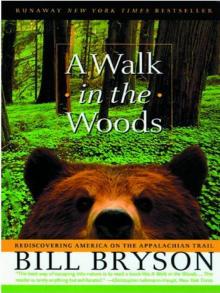 A Walk in the Woods
A Walk in the Woods I'm a Stranger Here Myself
I'm a Stranger Here Myself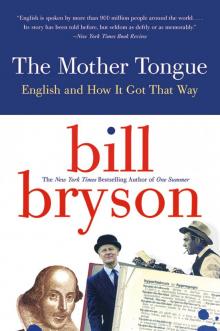 The Mother Tongue
The Mother Tongue Shakespeare
Shakespeare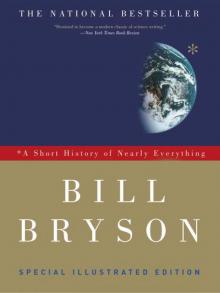 A Short History of Nearly Everything: Special Illustrated Edition
A Short History of Nearly Everything: Special Illustrated Edition The Best American Travel Writing 2016
The Best American Travel Writing 2016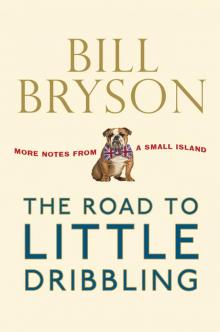 The Road to Little Dribbling
The Road to Little Dribbling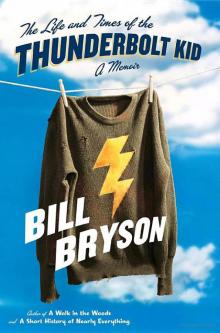 The Life And Times Of The Thunderbolt Kid: A Memoir (v5.0)
The Life And Times Of The Thunderbolt Kid: A Memoir (v5.0) Made In America
Made In America Seeing Further
Seeing Further Shakespeare: The World as Stage
Shakespeare: The World as Stage The Life and Times of the Thunderbolt Kid
The Life and Times of the Thunderbolt Kid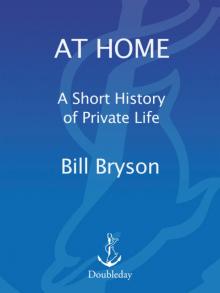 At Home
At Home Bryson's Dictionary For Writers And Editors (v5.0)
Bryson's Dictionary For Writers And Editors (v5.0) Neither Here Nor There
Neither Here Nor There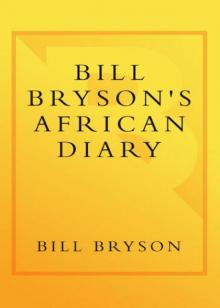 Bill Bryson's African Diary
Bill Bryson's African Diary